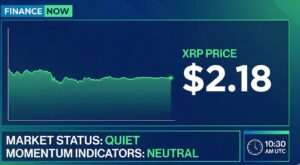Cryptocurrency has become a widely used digital asset for transactions. People and companies use crypto and blockchain to carry out transactions because it saves costs. Also, crypto helps to maintain some privacy when making purchases. As part of their investing plan, people hold digital currencies in an effort to secure gains.
Unfortunately, as cryptocurrencies have become popular, the number of scams and frauds users face has increased. Cybercriminals have become more visible due to the rising attraction of cryptocurrencies. These dishonest individuals use phishing, blackmail, Ponzi schemes, and counterfeit exchanges, among other illegal methods, to get their digital assets illegally. Cryptocurrencies lost stole an incredible $14 billion in 2021 alone.
According to Cointelegraph’s Crypto Hacks database, more than $990 million has been lost or stolen in 2023. One can expect this figure to go up since the year has not even ended.
In this article, we will look at how blockchain analysis can be used to recover stolen cryptocurrencies.
Recovering Stolen Cryptocurrencies with Blockchain Analysis
Blockchain analysis involves examining blockchain transactions to find illegal activity and recover stolen digital assets. Here is how it works:
Transaction Tracing
Blockchain analysts closely monitor the trail of transactions on the blockchain connected to the stolen cryptocurrency.
Address clustering
To help understand the flow of money across wallets, analysts group related addresses together to identify the transfer of the stolen monies.
Behavioral Analysis
Through transaction pattern analysis, analysts are able to identify odd or suspicious conduct that may be suggestive of theft or hacking.
Pattern Recognition
Analysts identify new risks early on and enable timely mitigation by using past data and well-known attack patterns.
Regulatory Vigilance
Governments everywhere are urging the crypto industry to adopt stricter Know Your Customer (KYC) and Anti-Money Laundering (AML) laws.
Collaboration
Working with exchanges, law enforcement, and other stakeholders to freeze or recover stolen funds is a common step in blockchain research.
Blockchain Analysis and Open-Source Intelligence
Blockchain analysis is one of the methods an investigator uses while looking into a crypto breach. Open-Source Intelligence (OSINT) is an additional essential component. To learn more about the people or organizations engaged in the breach, investigators use open-source intelligence (OSINT).
Investigators can build a thorough picture of the breach by fusing blockchain analysis with OSINT. This might help them find the culprits and improve the efficiency of asset recovery.
Warning Signs of Cryptocurrency Scams
No Project Transparency
Transparency is a top priority for reputable cryptocurrency projects. Crypto projects must provide in-depth details about their development strategy, technology, and personnel. Scammers, on the other hand, usually work secretly. Be careful if you come across a project that withholds important facts or uses vague language.
Promises of Unrealistic and Guaranteed Returns
Unrealistic profits are among the most common indicators that a cryptocurrency fraud is underway. Con artists often use the claims of very large and risk-free riches to entice victims. It is important to remember that there are no guarantees in the world of finance. While scammers aim to entice you with unrealistic profits, legitimate companies will highlight the possible dangers and benefits.
Pressure to Act Swiftly
High-pressure techniques are a common tool used by scammers to force their victims to make snap judgments. By claiming unique investment possibilities or restricted investment, they might create a feeling of urgency. Reputable initiatives allow you to make educated decisions at your speed, so keep that in mind. It’s best to take a step back and evaluate the issue with objectivity if you experience pressure or hurry.
Takeaways
With how common cryptocurrency scams are, all crypto enthusiasts need to be very careful of the type of project they invest in. If you ever get scammed, blockchain analysts can be a useful tool in recovering one’s stolen assets.




























